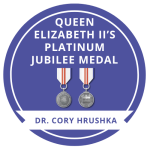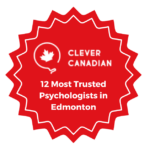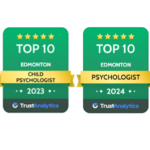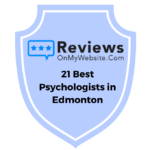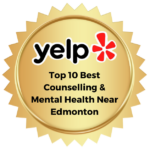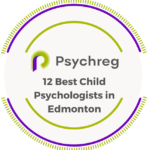Anxiety Disorders

Anxiety is a common and normal emotion that everyone feels from time to time. We feel anxious when we’re about to make a speech, have a difficult conversation with someone, or when we anticipate bungee jumping, for example. But when you are feeling constant or overwhelming anxiety in everyday situations that cause you to feel tension, apprehension, or extreme fear, that is accompanied by physical sensations such as heart palpitations, sweating, etc. then you are likely dealing with an anxiety disorder.
Generally, there are the following kinds of anxiety disorders:
- Generalized anxiety disorder
- Phobic disorder (phobias)
- Social anxiety disorder
- Panic disorder
- Obsessive-compulsive disorder
- Post-traumatic stress disorder
All of these disorders may have a biological cause or predisposition, but many of them can also be conditioned, learned, or induced by a belief or event. Stress can also be a factor that increases the likelihood of anxiety disorders.
Generalized anxiety disorder
Generalized anxiety disorder (GAD) is characterized by high levels of chronic anxiety about regular day-to-day life events, that are generally not related to any specific form of threat. People with GAD may experience physical symptoms such as:
- Trembling
- Muscle tension
- Diarrhea
- Faintness
- Dizziness
- Sweating
- Heart palpitations
- Fatigue
This disorder tends to start gradually, sometimes not being noticed for a long time until symptoms get to be too much to bear and begin to affect everyday life by causing you to avoid particular events or situations.
Phobic disorder (phobias)
Phobic disorder (or phobias) is a type of anxiety disorder identified as a persistent and/or irrational fear of something or a situation that usually presents no realistic danger to the individual. Many people have mild phobias such as fears of large animals, spiders, or public speaking. If you have a phobia, you likely either avoid what it is that causes your extreme fear or you endure it with great stress and fear. However, to be classified as a phobia, it has to seriously interfere with your general everyday behavior. Phobias can be specific and perhaps not overly impactful on your life – example, if you have a fear of snakes, it may not be that debilitating to avoid hiking where snakes may exist. Other specific phobias can be more problematic if say, you have a love of travelling but a fear of flying. If the phobia is related to something that is not easy to avoid such as being around people (social anxiety disorder) or agoraphobia (a fear of being in public places where it would be difficult or embarrassing to make a sudden exit), this can very negatively affect your everyday life and your quality of life in general.
Social anxiety disorder
Social Anxiety Disorder is the most common anxiety disorder and is characterized by an intense fear of normal social situations. You may fear being embarrassed, judged, or rejected in social situations such as parties, going for lunch with co-workers or even making a phone call. As a result, you may avoid these situations and become more and more reclusive and isolated, possibly causing you distress and impairing your ability to function in daily life. Often, you recognize your anxieties or fears as unreasonable but can’t move to overcome them without help.
Panic disorder
Panic Disorder is identified usually by some form of recurrent panic attacks that happen suddenly and unexpectedly. Panic attacks are sudden and intense feelings of overwhelming fear that include physical sensations that sometimes can be mistaken as having a heart attack. You may feel intense emotions as well such as the world ending or that you can’t breathe and/or are dying.
Symptoms of panic attacks:
- Feeling as if your heart is beating very hard and/or very fast
- Sweating
- Shaking
- Shortness of breath/difficulty breathing
- Chest pain/discomfort
- Light-headedness, dizziness, or feeling faint
- Nausea
- Numbness or tingling
It’s important to note that these symptoms are mistaken for cardiovascular events because they are consistent with heart episodes as well, so it’s important to get checked out at the hospital or doctor to rule out medical causes – especially if you’re experiencing a panic attack for the first time.
Obsessive-compulsive disorder (OCD)
Obsessive-compulsive disorder, also known in its shortened form as OCD, is an anxiety-based mental disorder. OCD tends to occur when your anxious thoughts are uncontrollable and you feel the urge to engage in some form of ritual that is usually senseless or excessive to feel relief from these intrusive thoughts. Read more about OCD here.
Post-traumatic stress disorder (PTSD)
Post-traumatic stress disorder first entered our vocabulary when it was identified in soldiers who returned from tours of duty. It’s been identified in other first responders as well, and PTSD can and does occur in anyone who has recently been through a traumatic situation. Assaults and abuse, kidnappings, car accidents, and serious or life-threatening injuries or illnesses are examples of situations that can cause you to develop PTSD. Read more about PTSD here.
When is it time to get help?
Anxiety is a sneaky mental health issue. It can creep up slowly and you may not even realize how much you are avoiding in your life to alleviate your worrying. It can disguise itself as “intuition”, causing you to have self-doubt where you didn’t before. You may see or seek out signs or superstitions to ensure that a situation is safe. When this all compounds to the point that you don’t feel like yourself anymore, or you aren’t participating fully in life, then it’s time to get help.
Anxiety disorders treatment methods
Your therapist will talk with you about your specific needs and individual circumstances because there are several forms of therapy that have been effective in treating anxiety disorders, including:
- Cognitive behavioural therapy (CBT) is an evidence-based approach to treatment that focuses on how people’s thoughts, emotions, and beliefs influence their behaviour and how they perceive themselves.
- Eye movement desensitization and reprocessing (EMDR) is an approach that works to help the brain process information, memories, sounds, and feelings in a way that makes them be seen in a new and less distressing way.
- Mindfulness therapy is an approach to treatment that focuses on how people’s thoughts, emotions, and beliefs influence their behaviour and how they perceive themselves, others, and the world. The ability to be in the moment, to acknowledge and regulate your emotions helps you to break free from negative thought patterns.
- Behaviour therapy tends to view human beings and behaviour with the assumption that humans are a product of their sociocultural conditioning and environment, looking at the current problems and the factors influencing them and emphasizes behaviour changes more than the underlying unconscious processes.
- Somatic Experience Therapy is a body-focused therapeutic approach designed to help individuals heal from trauma and chronic stress. Unlike traditional talk therapies, SE works directly with the nervous system, helping clients release stored tension and emotions through gentle, body-centered awareness.
What will I get out of treatment with Insight Psychological?
If you have social anxiety disorder, PTSD, OCD, generalized anxiety disorder, phobia disorder or panic disorder, it’s important that you know that you don’t have to live with the debilitating worrying. You can reduce your worries about going outside or doing things you enjoy for fear that you may become distressed.
Insight has many qualified psychologists and therapists with experience treating anxiety and panic issues at all of our offices across Alberta. Visit our contact page to make an appointment or speak to an administration/intake team member.






